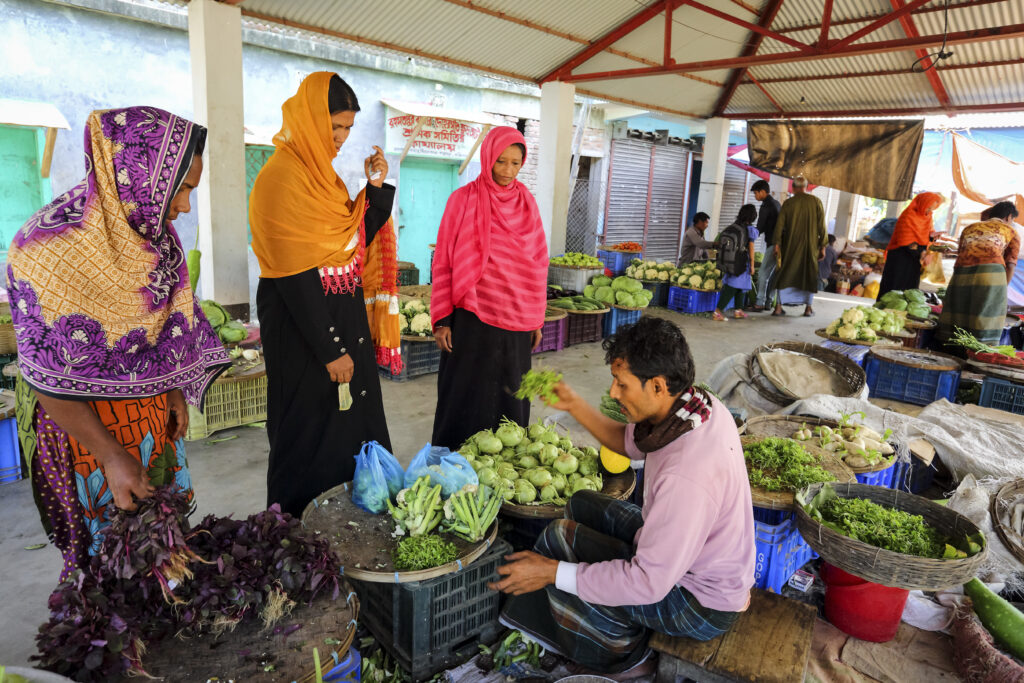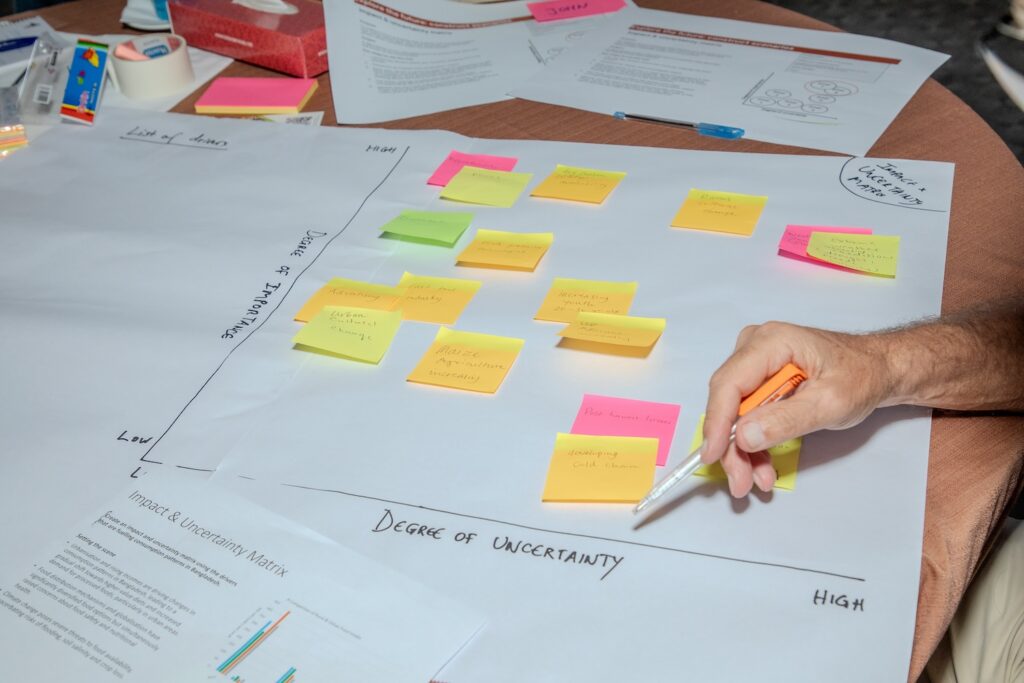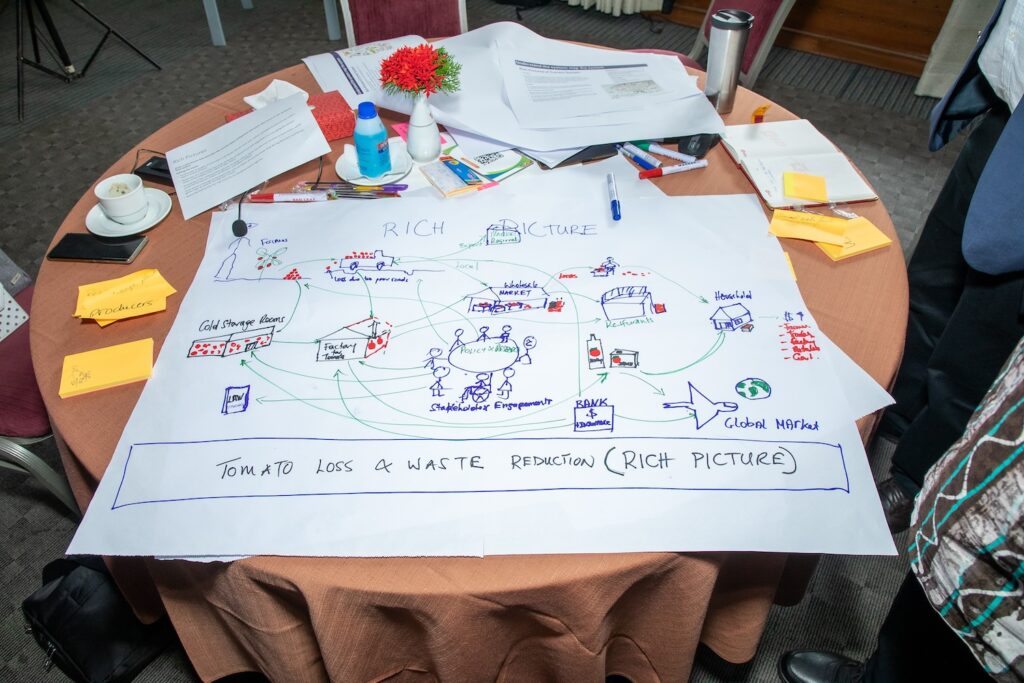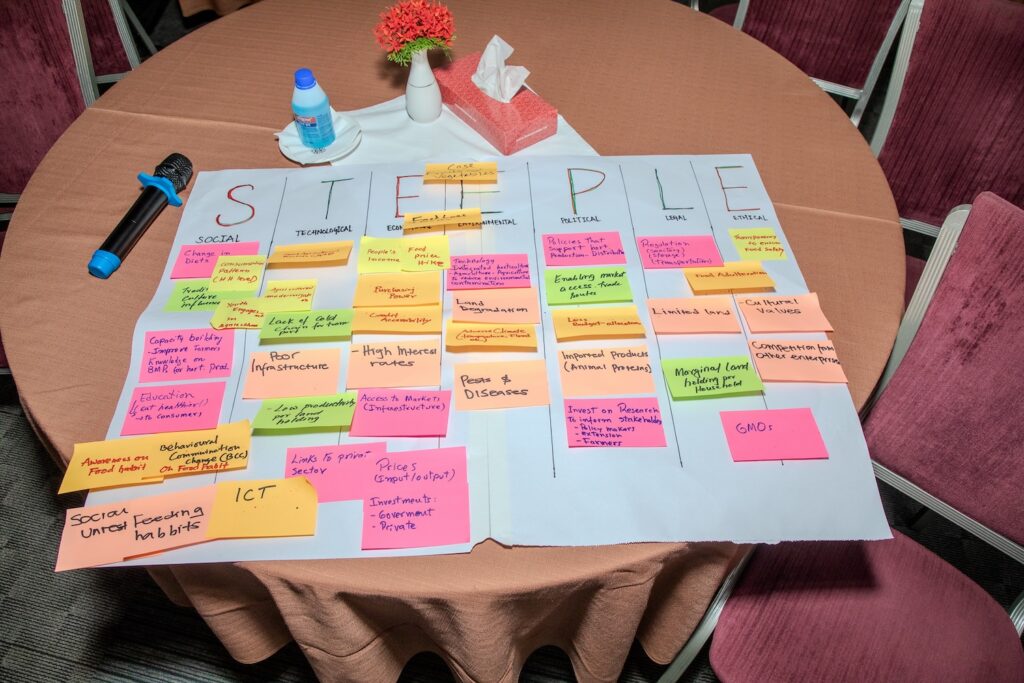By Bhawana Gupta, Monika Zurek, and John Ingram
In a world facing unprecedented uncertainties, the futureproofing of policies has become more crucial than ever. Foresight tools and methods, widely used across various sectors, play a pivotal role in supporting decision-making by providing an evidence base for assessing challenges, prioritising issues, sense-making, preparing a targeted action plan, and conducting risk assessments.
However, the challenge often lies in aligning these foresight activities with the policymaking cycle to create coherent, impactful policies. This blog provides a glimpse of an ongoing Foresight4Food study in Bangladesh, Jordan, Kenya and Uganda under the Foresight4Food FoSTr programme that explores how foresight tools can be systematically integrated into the policymaking cycle to enhance their utility and contribute to better policy outcomes.
The gap in current practices
Despite the widespread use of foresight methods, there is often a lack of clarity on how their outcomes can feed into decision-making. The foresight activity is frequently not recontextualized for the specific policy problem at hand. This disconnect poses a significant challenge, as the integration of foresight into the policymaking cycle is crucial for developing more resilient and future-proof policies. The goal is to bridge this gap by providing evidence on the most useful foresight tools and methods for each part of the policymaking cycle.
When foresight is integrated into the policymaking cycle, it ensures that future-oriented thinking is consistently applied throughout the policy development process, leading to more coherent and effective policies.
Read also:
The Complexity of Global Drivers of Food System Transformation – by Bhawana Gupta
The global food system needs to be transformed. It needs to deliver better health and improved livelihoods while protecting the environment and minimizing negative social impacts. However, there are many interconnected factors playing a role. Food Systems are complex…
Importance of linking foresight with the policy cycle
Integrating foresight processes with the policy cycle is essential to institutionalize foresight and enhance its usability at national and local levels. Institutionalizing foresight ensures that these methods are systematically applied, enabling policymakers to anticipate and prepare for future challenges effectively. It also ensures inclusiveness and rigour of the policy-making process.
Such work can draw on the experience in several high-income countries have successfully institutionalised foresight within their policymaking structures, demonstrating the benefits of this approach. Some examples are:
- Finland: Finland has a well-established foresight system integrated into its national policy framework. The Finnish Government Foresight Group coordinates foresight activities across various sectors, ensuring that long-term trends and future scenarios are considered in policymaking.
- Singapore: The Centre for Strategic Futures (CSF) in Singapore plays a key role in incorporating foresight into government planning. CSF conducts scenario planning and horizon scanning to support strategic decision-making and policy development.
- United Kingdom: The UK Government Office for Science runs the Foresight Programme, which explores future challenges and opportunities. This programme provides evidence-based insights to inform policy decisions across different government departments.
But what led to the establishment of foresight institutions as an integral part of the policy-making bodies in these countries? It’s the awareness, capacity building and the demand for foresight knowledge which have been crucial. Foresight4Food is playing a major role in its case study middle- and low-income countries in instigating the adoption of foresight across all levels of decision-making processes.
How our research is guiding foresight in middle and low-income countries
While high-income countries have made significant strides in institutionalising foresight, it is equally important for middle- and low-income countries to adopt these practices. The challenges faced by these countries, such as rapid urbanization, climate change, and economic volatility require proactive and informed policy responses.
Research on the appropriate foresight methods for different policymaking stages can significantly aid in institutionalising foresight in such countries by ensuring targeted application and resource efficiency, thus maximising the value of foresight activities. By pinpointing specific methods for each policy stage, governments can allocate limited resources more effectively, avoiding a one-size-fits-all approach. This tailored research provides a clear framework for capacity building, enabling policymakers to apply foresight methods appropriately across different policy stages. Demonstrating the practical benefits of specific methods enhances decision-making, supports institutional integration, and fosters a culture of foresight within government institutions.

Furthermore, it ensures policy coherence and continuity, establishing standardized foresight practices that maintain consistency even amidst political and administrative changes, ultimately promoting the institutionalisation of foresight in these countries.
Understanding the policymaking cycle
Institutional decision-making follows a structured sequential process known as the policymaking cycle, which guides actions and outcomes through distinct stages. Governments worldwide have adapted this cycle to develop new policies or reform existing ones. This model provides a clear and organized way to understand and analyse how policies are developed and executed.
However, in reality, the policymaking process is rarely this straightforward. It is typically non-linear, iterative, and influenced by a multitude of factors including political dynamics, stakeholder interests, and unexpected events. Despite this complexity, the policy cycle remains an important framework for several reasons but most importantly the principles underlying the policy cycle—such as systematic analysis, stakeholder engagement, and evidence-based decision-making—remain relevant. These principles provide a foundation for effective policymaking, guiding policymakers in navigating the complexities and uncertainties of the real world.
Understanding the policy-cycle stages is the first step, as it allows foresight practitioners to identify where future-oriented insights can be most impactful, ensuring that long-term considerations and potential future scenarios are effectively embedded into the policymaking process. This structured approach enhances the relevance and applicability of foresight outcomes, leading to more robust and resilient policies.
There are many examples of these policy cycles that have been developed and adapted but the essence remains consistent. Typically, it includes stages such as issue identification, policy identification, policy adoption and implementation, and lastly policy monitoring and evaluation. This cycle serves as a valuable model to explore which foresight tools/methods can generate insights needed for processing in the policy cycle.
Mapping foresight methods to policymaking stages
Foresight4Food researchers mapped more than 50 foresight tools and methods that have been implemented for a range of purposes. Sometimes the same tool was used for different purposes, which changes the way the tool was used and applied. Foresight methods can therefore serve various purposes at different stages of the policymaking process.



This study highlights several models of the policymaking cycle and how foresight tools can be mapped onto these stages. For example:
- Agenda Setting: Foresight can generate information on challenges, drivers of change, and options for tackling problems, which directs policymakers to develop a policy concept and contextualize the emerging problem.
- Policy Formulation: Scenario planning and trend analysis can help in developing policy options and assessing their potential impacts.
- Policy adoption and implementation: Participatory approaches and Delphi methods can facilitate inclusive participation and build consensus on the preferred policy option. Horizon scanning and risk assessments can enhance policy implementation by raising awareness of future changes and building networks for understanding visions among stakeholders.
- Monitoring and evaluation: Backcasting and impact assessments can be used to evaluate the effectiveness of implemented policies and provide a basis for future decision-making.
In conclusion, integrating foresight tools into the policymaking cycle is crucial for developing more resilient, future-proof policies. While high-income countries have demonstrated the value of institutionalizing foresight, it is vital for middle- and low-income countries to also adopt these practices to address their unique challenges and opportunities. By systematically linking foresight with the policy cycle, policymakers can create more informed, adaptable, and sustainable policies, ultimately contributing to better outcomes for society.